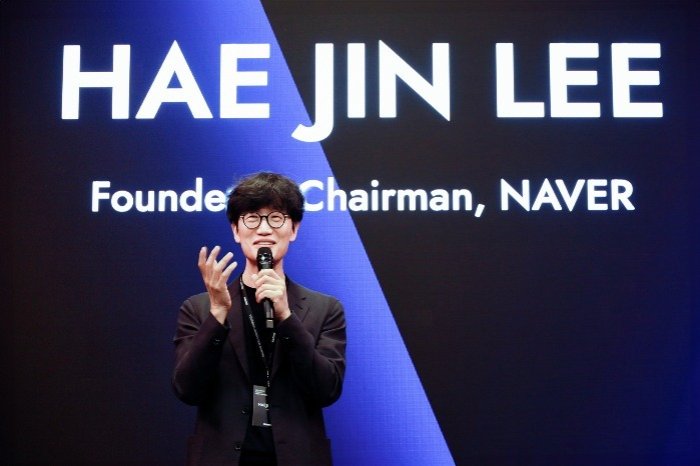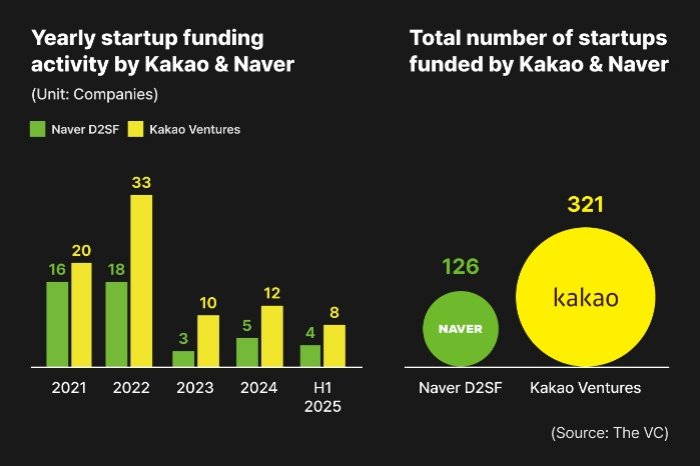Brand Stories
Inside Extended Stay America’s Formula: No Frills, High Margins

There’s nothing sexy about Extended Stay America (ESA). No rooftop infinity pools. No celebrity chef restaurants. And definitely no turndown service with artisanal chocolates on your pillow.
But ESA does have over 700 nearly identical hotels scattered across 45 states, most sitting near highway overpasses or office parks. Guests settle for weeks or months and buy groceries to stock their kitchenettes.
As ESA turns 30 this year, it has become the object of envy, with larger rivals like Hilton, Hyatt, Marriott, and Wyndham rushing to replicate its brands.
“Eight new extended-stay brands have been announced in the past several years,” said Greg Juceam, ESA’s president and CEO.
That’s a lot of added competition since 2021 when Blackstone and Barry Sternlicht’s Starwood Capital took ESA private in a $6 billion deal.
Yet Juceam is confident ESA can sustain its market lead and that there’s enough demand to support the increasing supply. Last year, ESA served 22 million guests and “had 180 basis points of market share growth,” he said.
A guestroom at an Extended Stay America property in the San Diego area. Source: ESA.
Two Nights? No Thanks.
The secret to ESA’s stability is almost absurdly simple: Longer stays equate to better economics than traditional hotels enjoy. Lower costs can drive higher margins, even though extended stay typically commands low
Brand Stories
Credit cards that offer hotel perks: How they work and who should get one

Some cards are co-branded with hotel chains, while others provide broad travel benefits across multiple brands.
Cards with hotel benefits (as compiled by Paisabazaar)
HSBC Taj Credit Card offers 25% savings on Taj hotel stays, room upgrades, dining discounts, free night stays and Taj InnerCircle Platinum membership.
Marriott Bonvoy HDFC Credit Card provides Marriott Bonvoy Silver Elite status, free night awards based on spending milestones, and Marriott Bonvoy Points on hotel and travel spends.

American Express Platinum Charge Card includes memberships with loyalty programmes such as Marriott Bonvoy Gold Elite, Hilton Honors Gold Elite, Taj Epicure Plus and others. Cardholders get room upgrades, complimentary breakfasts, and special rates at luxury hotels including Oberoi and Lalit.
Axis Bank Reserve Credit Card offers memberships like ITC Culinaire, Accor Plus and Club Marriott. Benefits include free night stays, dining discounts, room upgrades, and exclusive offers at partner hotels.
HDFC Infinia Credit Card (Metal Edition) provides Club Marriott membership, discounts and offers at ITC Hotels, and higher reward points on travel bookings through SmartBuy.
ALSO READ | How luxury hotels in India are evolving insurance practices with modern needs
ICICI Emeralde Private Metal Credit Card gives Taj Epicure membership, reward points on hotel bookings via iShop, and options to redeem points for hotel vouchers.
Axis Atlas Credit Card allows cardholders to earn EDGE Miles that can be converted into hotel loyalty points with partners like Accor, Wyndham, ITC and Marriott.
Hotels say these co-branded card tie-ups help build guest loyalty.
KB Kachru, Chairman, South Asia, Radisson Hotel Group, says, “Co-branded credit card partnerships are a powerful lever in enhancing guest loyalty and encouraging repeat stays. These collaborations extend the reach of our loyalty program beyond the hotel stay, allowing members to earn points on everyday purchases—making engagement with the brand more frequent and meaningful.”
He adds that Radisson has partnered with American Express and is exploring more local tie-ups to expand its base in India.
Arjun Baljee, Founder of Iconiqa and President of Royal Orchid Hotels, says, “Co-branded card partnerships help hotels remain top of wallet by allowing guests to earn points not only during stays but also through everyday spends, strengthening their transactional connection with the brand.”
Both hotel groups note that guests are redeeming more points and free night vouchers than before.
According to Kachru, redemption rates have increased, especially for leisure trips and festive stays. Baljee says guests often use points and vouchers on weekends and staycations.
Such premium hotel credit cards are generally used by frequent travellers and high spenders who stay at partner hotels and spend enough to benefit from loyalty rewards. Whether to use one depends on how often a person travels, their spending habits and if they can make full use of the perks relative to the annual fee, experts say.
ALSO READ | From points to perks: What hotel loyalty programmes are and who should join
Brand Stories
Kakao, Naver step up global AI hunt amid fierce tech race

South Korea’s internet pioneers, Kakao Corp. and Naver Corp., are ramping up overseas investments in artificial intelligence startups, shifting focus to North America in a move that is raising concerns among domestic startups over tighter funding at home.
After a two-year lull, both companies have resumed active startup investing but with a markedly global tilt.
The pair, which respectively backed about 20 startups annually during 2021–2022, have since cut that pace by more than half, according to Seoul-based tracker The VC.
Now, their investments are skewed toward US-based companies developing next-generation AI technologies in hopes of tapping innovations that align with their core platforms or open up new growth paths.
AI IS A MUST FOR ANOTHER LEAP
According to the investment banking industry on Tuesday, Naver Cloud Corp., a cloud computing arm of Naver, recently led a Series A funding round for Urban Datalab, the developer of an AI medical platform, MeDiAuto, with its own investment of 3.5 billion won ($2.5 million).
Naver’s newly launched Naver Ventures also made its debut investment in TwelveLabs, a Silicon Valley-based startup with an unrivaled multimodal AI technology that has already attracted big-name backers, including Nvidia, Samsung Electronics Co. and Intel Corp.
“We are open to collaboration (between Naver and TwelveLabs) next year or later,” said Kim Sung-ho, head of Naver’s Immersive Media Platform team.
Naver’s renewed push into AI investing has gained further momentum since its founder Lee Hae-jin returned as chairman earlier this year.
“If David wants to beat Goliath, he must aim well with the right stone,” said Lee at a ceremony celebrating the opening of Naver Ventures, the company’s first dedicated overseas venture capital in Silicon Valley, last month. “We are in the middle of picking the right stone.”
In this analogy, Naver is the underdog battling US tech giants in the AI race.
Naver’s in-house corporate venturing (CV) team, D2SF, has also made a series of AI-focused investments this year.
It has invested in AI-powered logistics platform startup Techtaka; AI game developer Anchor Node; AI-supported autonomous driving technology developer whereable.ai; and multi-modal commerce AI startup Studio Lab.
Kakao has been similarly active in investing in AI companies.
According to The VC, Kakao Investment Co., Kakao’s venture investment arm, has recently invested 3 billion won in Seoul-based AI chip startup FurisosaAI Inc.
Its another venture capital company, Kakao Ventures Corp. has joined early-stage funding rounds of AI agent developer Tzafon and large language model startup Trillion Labs.
NORTH AMERICA EMERGES AS A NEW BATTLEGROUND
While the uptick in tech investment is a welcome shift after years of slowdown, Korean startups now worry they may be left behind.
Historically reliant on Kakao and Naver for early-stage capital, domestic startups fear the funding tide may be turning westward – just as global AI interest is surging.

Of five startups Naver D2SF has invested in 2024, three are US-based, including 3D content developer Claythis and YesPlz AI, a fashion-focused multimodal AI developer.
Kakao Ventures has also invested in FS2, a 3D AI chip design company led by MIT engineers; Oligo Space, an automated spacecraft design and production toolchain developer; and medTech startup Kompass Diagnostics.
To deepen its reach in the North American venture capital ecosystem, Naver opened D2SF’s US office in Silicon Valley last year and launched Naver Ventures in the global tech hub to scout growth-stage firms.
Kakao Ventures’ officials regularly visit the US once every two to three months to build ties with local VCs, engineers and researchers.
Investors see more room for upside in US startups than in their Korean counterparts, offering greater synergy.

“The ecosystem for tech-based startups is more mature in the US, and top US universities generate stronger pipelines of investable early-stage companies,” said an official from a Korean VC company.
The trend also reflects a strategic calculus, said industry observers.
Korean tech giants face less public scrutiny abroad compared to frequent domestic criticism over big tech firms’ aggressive M&A moves with startups after investment.
That’s prompting concern that capital could increasingly flow to overseas startups instead of bolstering the local tech scene.
“Startup funding is borderless,” said an official in the VC industry. “Without competitiveness to appeal globally, any startups won’t survive.”
Write to Eun-Yi Ko at koko@hankyung.com
Sookyung Seo edited this article.
Brand Stories
‘Cruising is booming:’ Why luxury hotel brands are launching lavish cruise ships | Exclusive

Ritz-Carlton and Four Seasons are two of the world’s most renowned and expensive and hotel companies.
But forget staying in their hotel rooms – they’re among the top travel brands taking to the water.
And Waldorf Astoria – which is owned by Hilton – is the latest travel firm to strike out, launching a luxury Nile cruise in 2026.
DEAL: Save hundreds on a Queensland holiday with Discovery Parks
More akin to mega yachts and much smaller than regular cruise ships these vessels hold just a few hundred cashed-up guests.
Ritz Carlton recently launched its third ship, Luminara, with an A-list filled party.
READ MORE: Why Orange is the ultimate winter escape you haven’t considered (but really should)
Models Kendall Jenner and Naomi Campbell, TV host Martha Stewart, and actors Orlando Bloom and Kate Hudson were among those invited to the extravagant party.
Outside of hotels, on-the-ground tour company Trafalgar announced it is also expanding into river cruising with two new ships, the Trafalgar Verity and Trafalgar Reverie, for sailings on the Rhine and Danube rivers, starting in April 2026.

Ted Blamey Principal at specialist cruise consulting firm CHART Management Consultants says there are many reasons all these firms want in on the water-bound holidays.
“The first is basically that cruising is booming, so it’s a great opportunity for experienced travel and accommodation companies to capitalise on,” he tells 9Travel.
“Second, I guess, would be, that these organisations, they have very powerful existing guest basis.
READ MORE: Hawaii is the most popular US destination for Aussies, as new figures show a major shift in travel

“They have a very significant number of past guests who are loyal to the brand, and love it, and why not offer them something new that will continue to get their loyalty and of course, earn revenues.
“I guess another reason is that these same people are open to new experiences.”
Meanwhile he said cruising is unique from a business point of view because guests are captive on the vessel much of the time.
And that means you can control their holiday – as well as retain much of the money they pay to be there.
READ MORE: Best time to visit Bali: How to avoid crowds, high prices and the rainy season

The new players are competing against other luxury cruise brands such as Crystal Crusies, Ponant, Explora Journeys, Azamara, Silversea, and Regent Seven Seas.
But this could be good for the whole industry Ted says.
“I think all of us in the industry have felt for years that competition is a good thing, it grows the market,” he says.

Even Orient Express, most famous for its lavish trains, is getting involved. It’s planning the world’s largest sailing ship, Orient Express Silenseas, for next year.
Smaller Swiss brand, Aman is also setting sail.
Meanwhile, images show the first vessel for Four Seasons won’t be anything like normal cruiser.
The yacht will have an extendable marina on both sides for water sports, swimming or simply posing for Instagram photos.

Captain Kate McCue has jumped ship from Celebrity Cruises to captain it.
But one thing all the vessels will have in common is that their high-net-worth guests can enjoy the finest things the world can offer.
That includes an almost one to one crew member to guest ratio, fine dining meals from top chefs and lavish suites with huge terraces.
Prices are not always widely advertised but run into the tens of thousands, making a trip something everyday Aussie cruises can only dream of.
-

 Brand Stories2 days ago
Brand Stories2 days agoBloom Hotels: A Modern Vision of Hospitality Redefining Travel
-

 Brand Stories1 day ago
Brand Stories1 day agoOlive Living: India’s Intelligent, Community-Centric Hospitality Powerhouse
-

 Destinations & Things To Do3 days ago
Destinations & Things To Do3 days agoUntouched Destinations: Stunning Hidden Gems You Must Visit
-

 AI in Travel3 days ago
AI in Travel3 days agoAI Travel Revolution: Must-Have Guide to the Best Experience
-

 Brand Stories3 weeks ago
Brand Stories3 weeks agoVoice AI Startup ElevenLabs Plans to Add Hubs Around the World
-

 Brand Stories2 weeks ago
Brand Stories2 weeks agoHow Elon Musk’s rogue Grok chatbot became a cautionary AI tale
-

 Asia Travel Pulse3 weeks ago
Asia Travel Pulse3 weeks agoLooking For Adventure In Asia? Here Are 7 Epic Destinations You Need To Experience At Least Once – Zee News
-

 AI in Travel3 weeks ago
AI in Travel3 weeks ago‘Will AI take my job?’ A trip to a Beijing fortune-telling bar to see what lies ahead | China
-

 Brand Stories3 weeks ago
Brand Stories3 weeks agoChatGPT — the last of the great romantics
-

 Brand Stories2 weeks ago
Brand Stories2 weeks agoHumans must remain at the heart of the AI story














